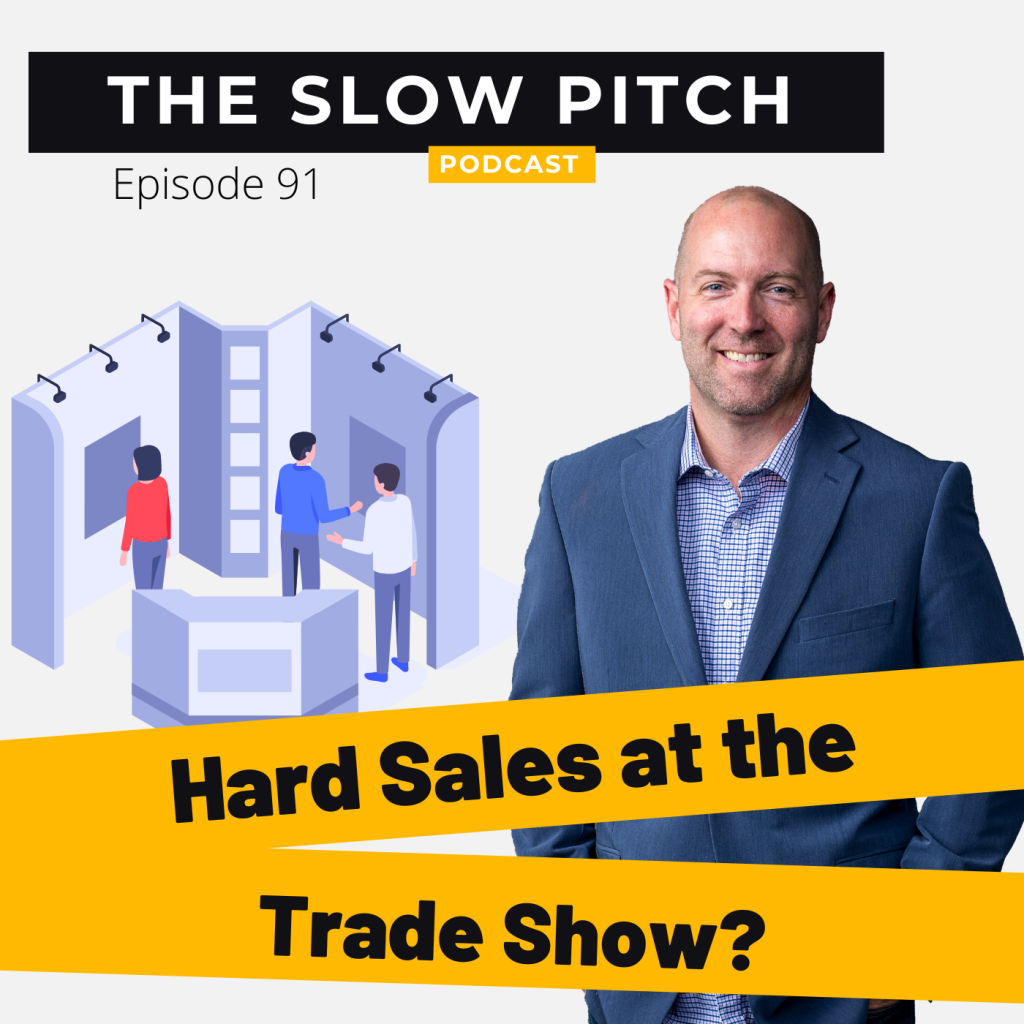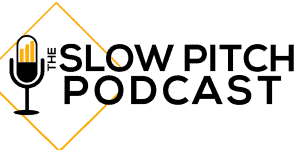Trade Show Sales Techniques


Notes
Engagement at a Trade Show is Key
One of the fundamental mistakes exhibitors make is passive or overly aggressive engagement. Rob from “The Slow Pitch” observed two extremes at a trade show. One set of exhibitors were disengaged, barely acknowledging visitors, possibly due to exhaustion or disinterest. This nonchalant attitude can alienate potential customers who might feel unwelcome or overlooked.
Conversely, some exhibitors adopt an overly aggressive approach. These individuals bombard every passerby with greetings and unsolicited information about their products or services. This can overwhelm and deter potential customers who prefer a more measured approach.
Clarity and Curiosity Sells
A successful trade show booth clarifies what is being sold immediately. Visitors should not have to inquire about the nature of the products or services; it should be evident through effective visual marketing and clear messaging. If a visitor does ask, “What are you selling?” it opens a door for conversation, not for an overwhelming barrage of information.
Rob illustrates a common mistake where exhibitors, when asked about their offerings, proceed to list every item available rather than engaging the customer to understand their interests or needs. This “throw up on my shoes” approach can frustrate visitors who may just be looking for a general idea before delving deeper.
Strategic Conversations
The most effective technique at a trade show is to engage potential customers in a conversation that feels personal and tailored to their needs. Rob recounts a positive experience where an exhibitor asked probing questions to understand his needs better before making any recommendations. This approach helps in identifying whether the visitor is a potential buyer or just browsing.
Asking the right questions can reveal much about the visitor’s intent and interest level. For instance, understanding whether a visitor’s queries about a product stem from genuine interest or mere curiosity can help tailor the response accordingly. This targeted interaction ensures that the exhibitor can provide value to the visitor, enhancing the likelihood of a future business relationship.
Building Relationships, Not Just Selling
An expert exhibitor understands that trade shows are not just about immediate sales but about building lasting relationships. As Rob points out, even if a visitor does not make a purchase, providing them with contact information and inviting them to explore further at their convenience can leave a positive impression. This approach positions the exhibitor as helpful and resourceful, making it more likely that the visitor will return when they are ready to make a purchase.
Effective selling at trade shows doesn’t just involve promoting a product or service; it’s about creating an engaging, informative, and respectful environment where potential customers feel valued. Exhibitors should be clear about what they offer, use a conversational approach to understand customer needs, and focus on building relationships rather than pushing for immediate sales. By adopting these strategies, exhibitors can maximize their trade show success and turn casual visitors into committed customers.
Related Articles
How To Stand Out From the Crowd at Trade Shows: 5 Creative Ideas
Exhibit Studios – How To Sell at a Trade Show
Podcast Recorded on Squadcast.fm
NOTE: Some links may be affiliate links, which means we get paid a commission when you purchase, but it the cost remains the same for you.
Music: "Clydesdale Funk" by Cast of Characters, written by: Dustin Ransom.
The Episode
Rob 0:08
Welcome back, everybody to The Slow Pitch. And today I wanted to share with you an experience I had at a trade show. I know we’ve talked about trade shows before. But if you ever attend a trade show, or you are behind a table at a trade show, this might be a helpful episode for you. Let’s get started.
V/O 0:27
This is The Slow Pitch Podcast.
Rob 0:31
Last week, I attended a trade show. And I had to travel across country and went to Las Vegas, attended a cool trade show that was really fun to watch, do a go through and experience some new things and, and see some new things. But I think what I took from that was the different approaches that people behind the table took, if I approach the table, and here’s what I mean.
Rob 0:54
So you had on one end of the spectrum, the person that was behind the table that just kind of stood there or, or sat there and didn’t do anything. They just did their thing behind the table. And they kind of were doing No, they weren’t even paying attention. No people that walked up, didn’t even say hi, they didn’t even like it was weird. I don’t know, they’re really tired. having a bad day. I don’t know, that’s one end of the spectrum.
Rob 1:16
Other end of the spectrum, far more annoying, was the one that wouldn’t let you walk by without saying hello. So this person was like, Hey, how you doing, and they started just dumping information on you or just started talking about something that they’re selling. And it was not very helpful.
Rob 1:33
So either one of those spectrum ends of the spectrum is if you’re going to a trade show, please don’t do those things. But within that spectrum, there’s a couple of different nuances that I thought was very interesting. One, on one end of the spectrum, I didn’t like the type of person that when I walked up to the booth, I wasn’t sure what the product or service was that they were selling.
Rob 1:52
So I might just ask a question, you know, what do you what are you guys selling here? I can’t figure this out which first step that would be the most important piece that your marketing stuff, right. So what is it? What are you selling? I should be able to figure that out pretty quickly. But let’s say that I couldn’t have asked that question.
Rob 2:05
Does that open up the invite for you, the person behind the table to throw up on my shoes? In other words, like, are you going to just tell me everything that you sell? And without even asking me any questions about why I’m asking. And that’s what happened.
Rob 2:21
So when I walked up to some of these tables, I would say something along the lines of, you know what, you know, what do you sell here? I can’t figure it out or whatever. And they would say, well, we sell X, we sell y we sell Z and in Bonelli that if you need this, we also do this, we also do that. And I was like, I didn’t ask for all of that. I’m just asking what in general do you sell, and then we can open up another conversation.
Rob 2:42
If you’re a trade show in, you’re going to be behind that table, you’re not there to sell, you’re there to start the conversation. That’s really yet there’s potential buyers there. And there are buyers there, but you have to find them. And you have to kind of sneak up on them. Like, when you go, if you were to go hunting, you don’t just go out and start shooting, you’re shooting your arrows, guns, whatever, you don’t do any of that stuff. Until you have something in your sight.
Rob 3:05
That actually makes sense, right? And you don’t make a bunch of noise to get that animal you you use. You sit quietly, and you wait until the timing is right. And the same thing applies at the tradeshow, you, you have to start asking questions before you can start selling.
Rob 3:22
We went up to one of these tables. And they literally saw us looking at one of their products and said, oh do you like this? It’s a new monitor. So here’s what it does. Here’s the specs, here’s the thing, here’s the thing you can do with it, blah, blah, blah, blah, blah. And I was like, I I’m not even shopping for a monitor. I just looked at it because I thought it was kind of cool.
Rob 3:37
And what you had on the on the display was really was something that I had never seen before. And I was watching that. Meanwhile, that person just into their Yep, in their mouth at me. And I’m like, I don’t even want to hear what you have to say. So knowing that piece, that’s one thing. The other end of that spectrum is is the person that starts to really ask the questions. And to me, those people are the most effective.
Rob 4:00
Here’s what I mean, I walked up to a booth once and I was kind of interested in the product. It was one of those, you know, kind of where they were selling podcasts and stuff. So there was a there was a bunch of different equipment there. And I was kind of looking, I’m thinking, you know, do I need this? Do I need that?
Rob 4:15
And the guy walks up to me and says, you know, what are you looking for? And I go, you know, I’m not really sure I just I feel like something could be better or different. What what do you what do you suggest? And in response, he said, Well, Which part do you think needs to be better? And I said, Well, I think the audio component might be something that I could improve, or this other piece of equipment that he had, which was kind of like a mixer kind of thing.
Rob 4:39
He says to me, Well, have you had people complain about that? And I said no. And he says, Well, have you had people ask questions about what type of equipment you use? I said Yeah, on occasion, but has it been a positive response to the question like are they said that I really liked the way it sounds? And… I want to know more information about that because I like the way it sounds, or is it one of those that they’re asking You because, you can, you know, they want to know what not to buy it. Could you tell?
Rob 5:04
I thought, man, that’s a great question. And so the more that I talked to him, the more questions he asked. It literally came to the point where he was like, I’m not sure I understand why you’re even looking at sounds like a lot of what people are telling you is, it sounds pretty good. And you don’t really have a lot of room to improve.
Rob 5:23
Could you buy a really, really, really, really expensive microphone? Sure. But it doesn’t sound like that’s something that you’re in need of, is it? I thought, man, have you been listening to my show? Because like that’s, that is, that is one of those things that is exactly the way it should have been, I share with you this story.
Rob 5:39
Because when you are in a trade show, or when you’re in a sales call, it’s the same thing. Your job is not to sell. Your job is to identify a potential buyer by weeding out those that are not buying. And you do that by asking all the right questions. He asked all the right questions, and determined that I was not a buyer today.
Rob 6:02
Did he share with me his information for contact? Yes. Did he give me a business card? Yes. Did he show me the website and say, Hey, if you ever want to look around again, just looking at the website, that’s totally fine. We can we can connect there and I can help you with whatever you need. Yes, he did all of that.
Rob 6:17
He handled it so well, that when I do need something I will be calling him. That is the difference between level expert and an average salesperson. Which one do you want to be today?
Rob 6:29
If you liked what you just heard, and you know some people that are in the sales world who may not be doing it right, share this episode with them so that they can improve and they can understand how to sell the right way. I truly appreciate you listening. Until next time, slow down and close more.
V/O 6:47
Thank you for listening to The Slow Pitch. Do you have a question about sales? Call or text your question at (608) 708-SLOW. That’s (608) 708-7569. Or you can email them to Questions@TheSlowPitch.com. Slow Down and Close More.
Rob 7:38
Thanks as always, for listening today. If you like this podcast, please subscribe and leave us a review. We’d really appreciate it. Follow us on Twitter, Instagram and Facebook at The Slow Pitch. We were mixed today as always by Johnny Polakis. And we were produced by High Gravity Studios. Music credits and other notes are in the show notes section on TheSlowPitch.com And we’ll be back with another episode soon.








